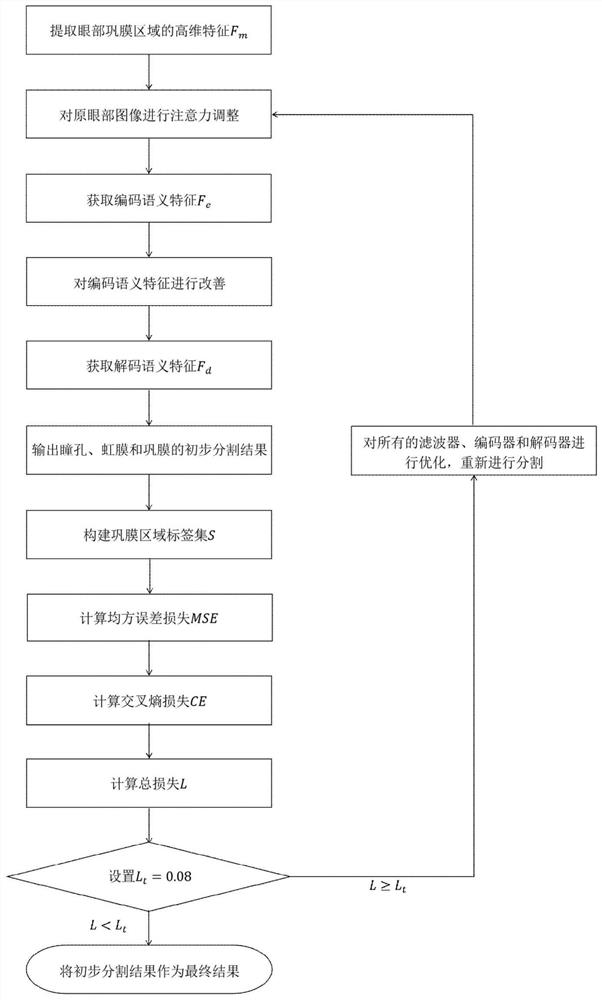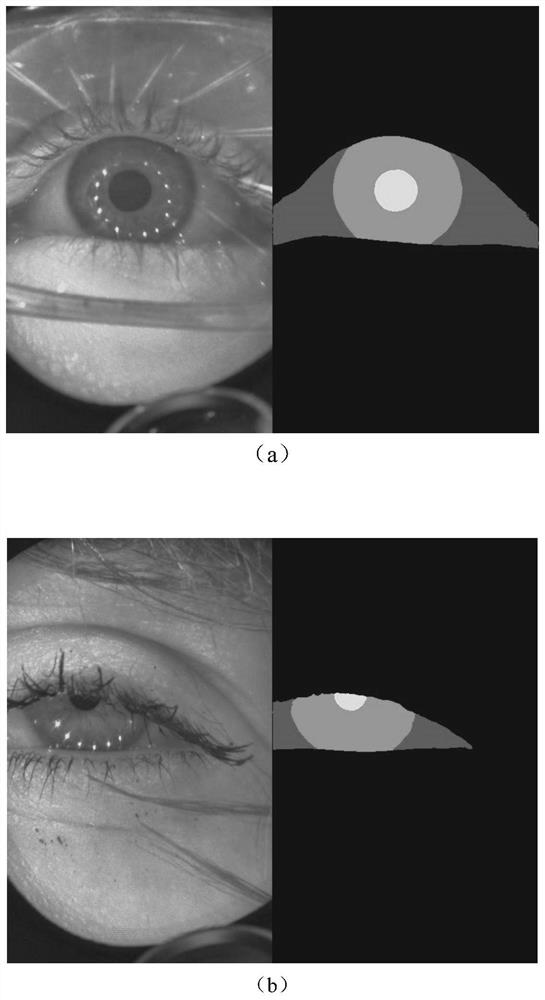Eye image segmentation method based on sclera region supervision
A technology of eye image and mask image, which is applied in the field of image processing, can solve problems such as limited segmentation accuracy, reduced segmentation efficiency, and time-consuming, and achieve the effect of ensuring segmentation speed, maintaining segmentation accuracy, and improving segmentation efficiency
- Summary
- Abstract
- Description
- Claims
- Application Information
AI Technical Summary
Problems solved by technology
Method used
Image
Examples
Embodiment Construction
[0034] The embodiments and effects of the present invention will be further described below in conjunction with the accompanying drawings.
[0035] refer to figure 1 , the specific implementation of this example includes the following steps:
[0036] Step 1, extract the high-dimensional feature F of the eye scleral region m .
[0037] 1.1) Download the OpenEDS eye segmentation data set from the Internet, which has a total of 12759 eye images, including 11319 segmentation labels with pupil, iris and sclera regions;
[0038] 1.2) Obtain the original eye image with labels from the downloaded OpenEDS eye segmentation dataset;
[0039] 1.3) Use the existing residual network to extract the features of the original eye image with the label, that is, input the eye image into the residual network, and output the high-dimensional feature F of the sclera area of the original eye image m .
[0040] Step 2, perform attention adjustment on the original eye image.
[0041] 2.1) Use t...
PUM
 Login to View More
Login to View More Abstract
Description
Claims
Application Information
 Login to View More
Login to View More - R&D
- Intellectual Property
- Life Sciences
- Materials
- Tech Scout
- Unparalleled Data Quality
- Higher Quality Content
- 60% Fewer Hallucinations
Browse by: Latest US Patents, China's latest patents, Technical Efficacy Thesaurus, Application Domain, Technology Topic, Popular Technical Reports.
© 2025 PatSnap. All rights reserved.Legal|Privacy policy|Modern Slavery Act Transparency Statement|Sitemap|About US| Contact US: help@patsnap.com



